Inbox and Environment News: Issue 284
October 9 - 15, 2016: Issue 284
Saving Grevillea Caleyi This Monday At Ingleside
Pittwater Natural Heritage Association (PNHA): October 3, 2016Saving endangered Grevillea caleyi at the Baha'i Temple. Bush care volunteers will be there again on Monday October 10, 8.30- 12.
Tools, morning tea and good company, lots of interesting spring flowers and of course, this lovely grevillea. More information call David on 0404 171 940.
Nature In Cities: Can Urban Planners Enhance Human Well-Being Using Biodiversity?
The University of Sydney is conducting a survey on how diverse communities interact with components of nature and biodiversity in cities, and how this affects their well-being.
The results will help urban planners to prioritise specific elements of greenspace in order to maximise the community’s benefit.
Please take a short survey to help with this research.Survey at: https://www.surveymonkey.com/r/CFT77F5
Floating Landcare In The Pittwater/Hawkesbury Area
Volunteers needed:
Where: Hungry Beach, Ku-ring-gai Chase National ParkWhen: Saturday 15th October 2016Time: 8:30am start and return 1:30pmMeet at: Cottage Point Wharf, Cottage PointCost: FREE
RSVP: Essential by Thursday 13th October! Please email your name and phone number to floatinglandcare@gmail.com or call Rebecca Mooy at Greater Sydney Local Land Services on 02 4724 2120. Confirmation details will be sent to all volunteers via email on 13.10.20168 volunteers so far, keen to take another 12.
Excellent progress was been made from previous Floating Landcare visits on the Mother of Millions on the dune behind the beach and Asparagus Fern on the upper slopes by previous Floating Landcare visits since 2012. Usually an opportunity for a quick swim at the end of the activity!
Where: Portugese Beach, Ku-ring-gai Chase National ParkWhen: Tuesday 8th November 2016Time: 8:15am start and return 2:00pmMeet at: Taylors Point Wharf, ClarevilleCost: FREE
RSVP: Essential by Friday 28th October! Please email your name and phone number to floatinglandcare@gmail.com or call Rebecca Mooy at Greater Sydney Local Land Services on 02 4724 2120. Confirmation details will be sent to all volunteers via email on 1.11.20168 volunteers so far, can take another 12.
Amazing progress on the Lantana on the steeper slopes at the southern end of the beach and a sweep through the dune for Aspargus Fern, Cotton Bush and litter. Looking for a few more volunteers to enjoy this trip and help with some follow up. This Beach could also be ideal for a swim in November.
Return transport on an oyster barge will be included as will morning tea, lunch, tools, gloves and bush regen knowledge from Judy Morris and Natasha Funke from NPWS.
To find out more about Floating Landcare:
Aussie Backyard Bird Count 2016
This year, the Aussie Backyard Bird Count will be back, bigger and better than ever. With more than a million birds counted last year, how many will we see in 2016? It’s all happening during Bird Week, 17–23 October.Let’s make every bird count!
Discover the Aussie Backyard Bird Count app!A 'how to' guide for using the Aussie Backyard Bird Count app.The app is currently available on:
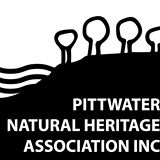
SUNDAY MORNING BIRDWATCHING with PNHA
Would you like to know more about our local birds and explore our bushland reserves? Then join us on one of our bird walks:
Our last walk of the year is at 7.30am on Sunday 27 November at Warriewood Wetlands. The summer migratory species will have arrived and the Wetlands will be home to nesting birds and birds with young. there should be plenty to see.Meet at Katoa Close, North Narrabeen.
Most walks last a couple of hours. Bring binoculars and morning tea for afterwards if you like. Contact pnhabirdwatching@gmail.com for details of each walk.

SUNDAY MORNING BIRDWATCHING with PNHA
Would you like to know more about our local birds and explore our bushland reserves? Then join us on one of our bird walks:
Our last walk of the year is at 7.30am on Sunday 27 November at Warriewood Wetlands. The summer migratory species will have arrived and the Wetlands will be home to nesting birds and birds with young. there should be plenty to see.Meet at Katoa Close, North Narrabeen.
Most walks last a couple of hours. Bring binoculars and morning tea for afterwards if you like. Contact pnhabirdwatching@gmail.com for details of each walk.
Colourful New Australian Tree Frog Leaps Into The Spotlight
30 September, 2016 AUSTRALIAN MUSEUM/UNSW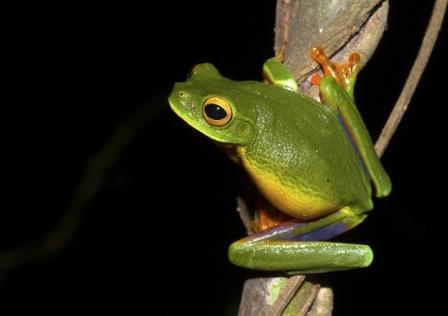
Cape York Graceful Treefrog (Litoria bella) Photo: Jodi Rowley ©
A new species of green treefrog – with distinctive orange hands, orange feet and iridescent purple inner thighs – has been discovered in northern Cape York Peninsula.
Named Litoria bella, or the Cape York Graceful Treefrog, the striking animal was identified by a team including Dr Jodi Rowley, Curator of Amphibian and Reptile Conservation Biology at the Australian Museum Research Institute and UNSW.
The small frog had previously escaped scientific scrutiny because it had been mistaken for a southern relative called the Graceful Treefrog, which is commonly heard calling after rain in Spring and Summer along the east coast of Queensland and north eastern NSW.
This species was thought to occur as far north as the top of Cape York Peninsula. However, the researchers became suspicious that more than one species was involved, due to the subtle differences between the Cape York frogs and their southern counterparts.
They decided to investigate and compared the appearances, calls and DNA of the two groups. Their study concluding that the frogs on northern Cape York Peninsula are a distinct species is published in the journal Zootaxa.
The known range of the Cape York Graceful Treefrog stretches from Moa Island in the Torres Strait, in the north, to about 20 km south of Coen on Cape York Peninsula, in the south.
The northern-most record of a Graceful Treefrog is 220 kilometres further south, in the Endeavour Valley near Cooktown.
Identification of the new species brings the total number of known frog species in Australia to 239.
“We were also surprised to discover that the new species is more closely related to similar frogs in New Guinea than to its southern relative,” says Dr Rowley, of the Centre for Ecosystem Science in the UNSW School of Biological, Earth and Environmental Sciences.
“The discovery of this little green gem of the frog world is further evidence that we have a long way to go to fully document and understand the amazing biodiversity of northern Australia.”
The team includes Keith McDonald, an Honorary Associate at Queensland Museum; Stephen Richards of the Herpetology Department at the South Australian Museum; and Greta Frankham, Manager of the Australian Centre for Wildlife Genomics in the Australian Museum Research Institute.

Nature Conservancy Writing Prize 2017
Enter The Nature Conservancy Australia Nature Writing Prize today!Calling all writers! The Nature Conservancy Australia is delighted to open the fourth biennial Nature Writing Prize.
$5,000 will be awarded to an essay of between 3,000 and 5,000 words in the genre of ‘Writing of Place’. The prize will go to an Australian writer whose entry is judged to be of the highest literary merit and which best explores his or her relationship and interaction with some aspect of the Australian landscape. The competition’s judges are award-winning journalist, author and editor Jo Chandler and novelist and critic James Bradley. The winning entry will be published in Griffith Review online as a multimedia essay.
The prize has been made possible thanks to a generous donation from the McLean Foundation, which promotes and celebrates the art of nature writing in Australia.
The deadline for submissions is January 27, 2017. Click here to learn more about the prize and review the terms and conditions of entry.
Have Your Say On The Rocky Hill Coal Project Application
17.08.2016 : Departmental Media Release - Department of Planning and EnvironmentAn amended development application by Gloucester Resources Limited for the Rocky Hill Coal Project will be on exhibition from today for community consultation.
The Department of Planning and Environment is keen to hear the community’s views on the amended proposal which involves:- developing and operating an open-cut coal mine to produce up to two million tonnes of coal per year for up to 21 years
- constructing and operating a private coal haul road linking the Rocky Hill Coal Project with the Stratford Coal Complex, approximately nine kilometres to the south
- using the private haul road to transfer coal between 7:00 am and 6:00 pm only, Monday to Saturday
- using the private coal haul road to deliver heavy equipment and construction materials to the mine area
- rehabilitating the site
A spokesperson for the Department said the public should also view the modification application for the Stratford Extension Project, which is being exhibited simultaneously with the amended Rocky Hill Coal Project proposal.
“The public should also note the changes from a previous Rocky Hill Coal Project proposal which was exhibited in 2013,” a spokesperson said.
“Key changes in the amended proposal include three open cut pits instead of four and no night-time hours of work. Additionally, it proposes no evening hours of work for the first three years of the project.
“In the new proposal, coal would be hauled on a private haul road to the nearby Stratford Coal Mine. The Rocky Hill project would therefore not need a Coal Handling and Preparation Plant or a rail loop and train loading bin, or a coal conveyor. The amended proposal does not include:- constructing and operating an on-site Coal Handling and Preparation Plant
- constructing and operating a Rail Load-out Facility, including a rail loop and overhead loading bin, to dispatch the product coal to the Port of Newcastle
- developing a three kilometre partially-enclosed overland conveyor, to link the CHPP to the Rail Load-out Facility
- operating the mine during night-time hours
- operating the mine during evening hours for the first three years of the mining operations.
A spokesperson for the Department said the local community always has an opportunity to share their views.
“Community consultation is an integral part of the planning process and the applicant will have to respond to the feedback we receive.
“This feedback is taken into consideration as part of the assessment. “It’s easy to participate by going online and we encourage everyone to take a look and have their say.”
To make a submission or view the Environmental Impact Statement (EIS), visit www.majorprojects.planning.nsw.gov.au
Submissions can be made from 17 August until 14 October 2016.
Written submissions can also be made to: Department of Planning and EnvironmentAttn: Director – Resource AssessmentsGPO Box 39 Sydney NSW 2001
The application and EIS are also available to view in person at: Department of Planning and Environment, 23-33 Bridge Street, SydneyNature Conservation Council, Level 14, 338 Pitt Street, Sydney Mid Coast Council Offices:- 89 King Street, Gloucester - Breese Parade, Forster- 2 Pulteney Street, Taree- Customer Service Centre, 6 Church Lane, Stroud (9 am to noon)
Have your say on the modification application for Stratford Extension Project17.08.2016 : Departmental Media Release Author: Department of Planning and Environment
A modification application for the Stratford Extension Project will be on exhibition from today for community consultation.
The Department of Planning and Environment is keen to hear the community’s views on Stratford Coal Pty Ltd’s modification application which seeks to:- use a private haul road to transfer coal from the Rocky Hill Coal Project to the Stratford Coal Mine site
- construct an extension of the existing coal stockpile to accommodate Rocky Hill’s coal, and process coal from this stockpile through the existing Stratford Coal Handling and Preparation Plant
- place Rocky Hill product coal on the existing Stratford product coal stockpile
- load and dispatch Rocky Hill product coal from Stratford’s existing rail loop and coal load-out system
The community can also view the related but separate Rocky Hill Coal Mine amended development application also on exhibition currently, and make a submission.
A spokesperson for the Department of Planning and Environment said the local community always has an opportunity to share their views.
"Community consultation is an integral part of the planning process and the applicant will have to respond to the feedback we receive," the spokesperson said.
"This feedback is taken into consideration as part of the assessment. "It’s easy to participate by going online and we encourage everyone to take a look and have their say."
To make a submission and the view the modification application visit www.majorprojects.planning.nsw.gov.au
Submissions can be made from 17 August to 14 October 2016. Written submissions can also be made to:Department of Planning and EnvironmentAttn: Director – Resource AssessmentsGPO Box 39 Sydney NSW 2001 The application is also available to view in person at:Department of Planning and Environment, 23-33 Bridge Street, SydneyNature Conservation Council, Level 14, 338 Pitt Street, Sydney Mid Coast Council Offices:- 89 King Street, Gloucester - Breese Parade, Forster- 2 Pulteney Street, Taree- Customer Service Centre, 6 Church Lane, Stroud (9 am to noon)
- developing and operating an open-cut coal mine to produce up to two million tonnes of coal per year for up to 21 years
- constructing and operating a private coal haul road linking the Rocky Hill Coal Project with the Stratford Coal Complex, approximately nine kilometres to the south
- using the private haul road to transfer coal between 7:00 am and 6:00 pm only, Monday to Saturday
- using the private coal haul road to deliver heavy equipment and construction materials to the mine area
- rehabilitating the site
- constructing and operating an on-site Coal Handling and Preparation Plant
- constructing and operating a Rail Load-out Facility, including a rail loop and overhead loading bin, to dispatch the product coal to the Port of Newcastle
- developing a three kilometre partially-enclosed overland conveyor, to link the CHPP to the Rail Load-out Facility
- operating the mine during night-time hours
- operating the mine during evening hours for the first three years of the mining operations.
- use a private haul road to transfer coal from the Rocky Hill Coal Project to the Stratford Coal Mine site
- construct an extension of the existing coal stockpile to accommodate Rocky Hill’s coal, and process coal from this stockpile through the existing Stratford Coal Handling and Preparation Plant
- place Rocky Hill product coal on the existing Stratford product coal stockpile
- load and dispatch Rocky Hill product coal from Stratford’s existing rail loop and coal load-out system
Some Birds Behave Like Human Musicians
October 6, 2016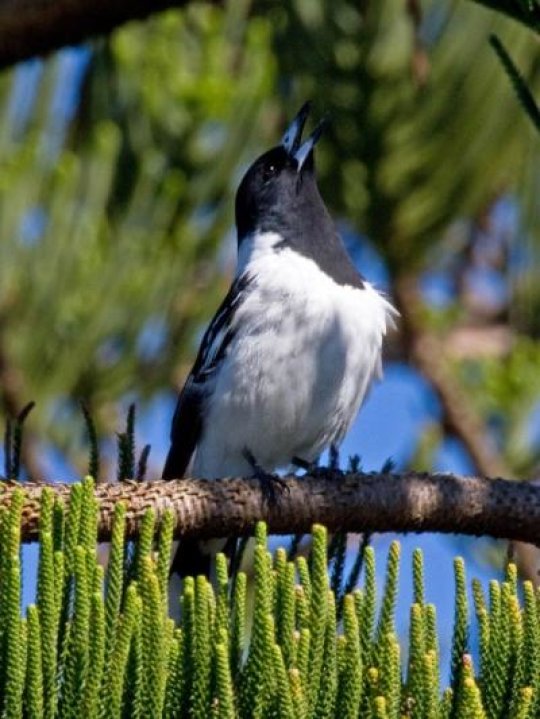
The pied butcherbird. Credit: Image courtesy of New Jersey Institute of Technology
The tuneful behavior of some songbirds parallels that of human musicians. That's the conclusion presented in a recent paper published by an international team of researchers, among them David Rothenberg, distinguished professor of philosophy and music in NJIT's Department of Humanities. Other members of the team are from the City University of New York (CUNY), the Freie Universität Berlin and Macquarie University in Australia.
"Temporal regularity increases with repertoire complexity in the Australian pied butcherbird's song" was published online in Royal Society Open Science.
A Very Musical SpeciesThe pied butcherbird, a very musical species, provided a wealth of intriguing data for analysis by co-author Eathan Janney, a Ph.D. candidate in the Department of Psychology at CUNY's Hunter College. Janney based his analysis upon years of data collected and also analyzed by violinist and biomusicologist Hollis Taylor of Macquarie University, who has previously published extremely detailed analyses of butcherbird songs. "Since pied butcherbird songs share so many commonalities with human music," Taylor writes, "this species could possibly revolutionize the way we think about the core values of music."
In the past, claims that musical principles are integral to birdsong were largely met with skepticism and dismissed as wishful thinking. However, the extensive statistical and objective analysis of the new paper demonstrates that the more complex a bird's repertoire, the better he or she is at singing in time, rhythmically interacting with other birds much more skillfully than those who know fewer songs. The accompanying video includes a sample of a butcherbird's solo song, as well as the song of another butcherbird and an Australian magpie.
Co-author Ofer Tchernichovski, professor in the Hunter College Department of Psychology, finds that the butcherbirds "balance their performance to keep it in a sweet spot between boredom and confusion." Constance Scharff, a co-author who directs the animal behavior laboratory at the Freie Universität Berlin, says "pied butcherbirds, not unlike jazz musicians, play around with their tunes, balancing repetition and variation." This finding suggests that such musical virtuosity may signify more than just the evolution of a way for birds to establish territorial dominance and facilitate mating. It may also provide evidence that musical ability in birds was a precursor to the evolution of the many dimensions of musical ability in humans.
Inclusive Multidisciplinary ResearchThe paper is the product of inclusive multidisciplinary research. It integrates input from biologists, neuroscientists, musicians and engineers, including co-author Lucas C. Parra, a member of CUNY's Department of Biomedical Engineering.
Rothenberg, who provided his unique perspective, says, "Science and music may have different criteria for truth, but sometimes their insights need to be put together to make sense of the beautiful performances we find in nature."
Rothenberg has written extensively about the bond between humans and our surrounding natural world, a world we share with myriad other creatures. An earlier paper that he co-authored, "Investigation of Musicality in Birdsong," published in Hearing Research touched upon aspects of the same topic explored in the recent Royal Society publication. Rothenberg's book Why Birds Sing is an in-depth look at the subject that challenges neuroscientists to seriously consider music as a tool to help understand birdsong.
As a musician -- he plays the clarinet and saxophone -- Rothenberg has added the dimension of music to research connecting the living sounds of the natural world to traditions of global rhythmic innovation and improvisation. His book Thousand Mile Song is about making music with whales, and Bug Music, How Insects Gave Us Rhythm and Noise offers the provocative premise that listening to cicadas, as well as other humming, clicking and thrumming insects, fostered an innate sense of musical rhythm and synchronization over the long history of human evolution.Eathan Janney, Hollis Taylor, Constance Scharff, David Rothenberg, Lucas C. Parra, Ofer Tchernichovski. Temporal regularity increases with repertoire complexity in the Australian pied butcherbird's song. Royal Society Open Science, 2016; 3 (9): 160357 DOI: 10.1098/rsos.160357

Closing Submissions Acland Mine Case: Water, Air Quality And Farming At Risk
5 OCTOBER 2016: EDO QLD. Media ReleaseEvidence for a landmark public interest case in the Land Court, objecting to New Hope’s controversial New Acland Coal mine expansion, comes to an end this week when lawyers for community group Oakey Coal Action Alliance and 12 of the 33 objectors deliver their closing oral submissions.
The Environmental Defenders Office Qld is representing Oakey Coal Action Alliance (OCAA), a community group with more than 60 farmers and residents. The Land Court began hearing evidence from OCAA and other objectors on 7 March. See below for more detail about mine impacts and key findings revealed in evidence.
Jo-Anne Bragg, CEO of Environmental Defenders Office Qld said: “The Land Court objection to the New Acland Coal mine expansion is possibly the largest environmental public interest case Australia has ever seen*.
“Farmers and local residents are passionate about stopping this controversial mine expansion as they believe it will rip the heart out of their community, risk precious groundwater and make their children’s economic future precarious.
“This size of this court case and number of objectors largely reflects the detrimental effects this mine has already had on locals, who have suffered the impacts for over a decade.
“The court case scrutinised whether the social, environmental and economic impacts on Queensland of expanding the mine justify the claimed benefits of the 12-year coal mine expansion. In our opinion, the evidence put forward shows the mine expansion cannot be justified”, Ms Bragg said.
Ms Bragg said during the 84 hearing days of the case, evidence challenged various claims made by New Acland mine owners New Hope, exposing:
- Faulty groundwater modelling: The case showed faulty and unreliable groundwater modelling, potentially placing farmers’ critical groundwater supplies at risk.
- Noise and dust risks and complaints: Evidence showed there was a high risk of the project exceeding air quality limits unless controls were in place. The Court heard the community’s complaints about coal dust and noise levels and requests for data have fallen effectively on deaf ears for the past decade, including more than 100 complaints to New Hope and 30 to the state environment department.
- Over-inflated job figures: The project’s original environmental impact statement stated the project would produce an average of 2,953 jobs per annum, yet in court this figure was reduced to 680 net jobs nationally.
- Limited royalties to QLD government: In Court it was revealed an estimated $500M in royalties from the expansion would flow to the coal company and a small number of property owners, instead of to the Queensland Government which would receive just 7% of this, severely limiting financial benefits from royalties to taxpayers.
“This hearing has been the community’s chance to present clear evidence to the Land Court, the government and the public as to why the proposed project is damaging and should not proceed.
“Without this case, and without hard work by non-profit lawyers at EDO Qld over the very lengthy hearing, the costs and benefits of this massive project for the local community and the environment would not have been properly scrutinised.
“The case showed up in stark relief problems everyday people face in gaining access to justice, with community objectors lacking the financial resources of big miners and struggling to adequately prepare, in the timeframes set, for what was an intense, complex and lengthy trial.
“The Land Court will come back to parties with a recommendation to the State Government.”
BACKGROUND*The Land Court of Queensland challenge involved approximately: 40 individual objectors (on 35 objection forms, three of which were withdrawn); 27 expert witnesses (eight of which were called by objectors); 38 lay witnesses; 14 active parties; 84 hearing days; two site inspections; 1,892 exhibits; and 7,452 pages of court transcripts.
Many from the local and broader community are opposed to the expansion by New Acland Coal, as is evidenced by the roll call of 40 individual objectors including a local community group of more than 60 members, the Oakey Coal Action Alliance.
The area of Acland has been settled since the 1850s and the town formed in 1913. The existing mine commenced in 2000 and has been a great concern to those living under the shadow of its impacts. Objectors fear any further expansion would be an unsustainable blow to the community and the region.
Many farmers, like award-winning dairy farmer Noel Wieck whose family has lived and worked the land in the region for nearly a century, and nearby residents, like those who grew up in the once thriving town which was an inaugural winner of the Queensland Tidy Town awards, are proud locals who contribute to their community and make improvements to their farm in the hopes to pass on the farms and community spirit to their children and grandchildren.
Yet the mine expansion, known as Stage 3, will see an increase in the annual production of coal from 5.2 to 7.5 million tonnes for just 12 years to 2029 – but potentially will leave a legacy of major ongoing impacts to the health of residents and integrity of the community, productive food-growing farmland, and vital water resources.
Oakey Coal Action Alliance has argued that the expansion will permanently disturb over 1,361 hectares (13.61km2) of prime agricultural country identified by the government as ‘strategic cropping land’. It will potentially drop groundwater levels up to 47 metres on the mine site and one metre or more across a 21 kilometre wide area around the site; and seriously degrade air and noise quality in the area. This further threatens local residents, some who are already suffering the impacts of coal dust from the current operation.
In Court, evidence showed the economic benefits that might usually make such a project viable (jobs, royalties and economic benefits to Queensland) were challenged by the impacts and risks the 12-year expansion would cause. Evidence (listed in the media release, above) also showed faulty groundwater modelling – risking vital groundwater supplies to farmers – as well as high risks of exceeding air and noise quality limits after locals complaints had effectively fallen on deaf ears for nearly a decade.
The case is significant because it brings into focus the battle between mining and agriculture and the community’s need to have the Land Court as an independent umpire to scrutinise the costs and benefits of such projects, as well as hold government and industry to account.
- Faulty groundwater modelling: The case showed faulty and unreliable groundwater modelling, potentially placing farmers’ critical groundwater supplies at risk.
- Noise and dust risks and complaints: Evidence showed there was a high risk of the project exceeding air quality limits unless controls were in place. The Court heard the community’s complaints about coal dust and noise levels and requests for data have fallen effectively on deaf ears for the past decade, including more than 100 complaints to New Hope and 30 to the state environment department.
- Over-inflated job figures: The project’s original environmental impact statement stated the project would produce an average of 2,953 jobs per annum, yet in court this figure was reduced to 680 net jobs nationally.
- Limited royalties to QLD government: In Court it was revealed an estimated $500M in royalties from the expansion would flow to the coal company and a small number of property owners, instead of to the Queensland Government which would receive just 7% of this, severely limiting financial benefits from royalties to taxpayers.
University Of Sydney Robotics Centre To Revolutionise Australian Horticulture
6 October 2016: Media Release - Assistant Minister for Agriculture and Water Resources, Senator Anne Ruston
Assistant Minister for Agriculture and Water Resources, Senator Anne Ruston, will today open Australia's first horticultural robotics learning and development hub at the University of Sydney.
Located within the University's Australian Centre for Field Robotics (ACFR), Senator Ruston said the Horticulture Innovation Centre for Robotics and Intelligent Systems (HICRIS) will become a hub for horticulture robotics in Australia.
"A future generation of students will be trained right here and will take their place as leaders in the horticulture industry, and researchers here will oversee the creation of world-leading technological advancements," Minister Ruston said.
"The centre will support the horticulture industry in defining and monitoring its strategic objectives around robotics and related technologies, and provide opportunities to interact with other agricultural industries interested in robotics.
"Innovation and science are critical for Australia in driving growth and creating jobs—and I'm certainly proud to be part of the Turnbull Coalition Government that has a focus on exactly that."
The centre will initially host two projects, funded by Horticulture Innovation, worth $9 million, in robotics and autonomous technology that aims to increase farm efficiencies:
- the robotics project Evaluating and testing autonomous systems developed in Australian vegetable production systems, will involve designing, building, demonstrating and evaluating robotic platforms and technologies for different farming operations across varied growing regions in order to prove operational effectiveness
- the decision support project Using autonomous systems to guide vegetable decision-making on-farm, which will further develop technologies to reduce production costs and increase on farm productivity in the vegetable industry, in particular Brassica, Lettuce and Baby Leaf.
Minister Ruston said both of these projects build upon previous work by the ACFR, which developed a robotic system named Ladybird—an engineering prototype that has been successfully deployed on-farm to demonstrate crop intelligence and crop manipulation.
"There are already tangible outcomes from the work done right here. I know there will be many more in the years to come," Minister Ruston said.
"All industries now face an increasingly fast-paced technological landscape. Horticulture is certainly no exception.
"The results of the work you do here will have broad-reaching benefits for Australian horticultural industries—they will benefit from improved information about production, more precise application of inputs, increased productivity and ultimately, reduced costs and higher returns at the farmgate."
- the robotics project Evaluating and testing autonomous systems developed in Australian vegetable production systems, will involve designing, building, demonstrating and evaluating robotic platforms and technologies for different farming operations across varied growing regions in order to prove operational effectiveness
- the decision support project Using autonomous systems to guide vegetable decision-making on-farm, which will further develop technologies to reduce production costs and increase on farm productivity in the vegetable industry, in particular Brassica, Lettuce and Baby Leaf.
Wilderness Horse Riding
Draft amendments to plans of managementDraft amendments to the plans of management for Far South Coast Escarpment Parks, Kosciuszko National Park and Mummel Gulf National Park and State Conservation Area are on public exhibition until 31 October 2016.
The plans of management for the above parks were amended in 2014 to enable a pilot program to trial horse riding in wilderness areas. The trial concluded in April 2016 and is currently being evaluated. The draft amendments propose to allow horse riding to continue in the same locations until 31 December 2017 while the evaluation is undertaken.
Have your sayTo view the draft amendments, visit the Environment NSW website.
Online ConsultationDate: Sep. 16 - Oct. 31, 2016Time: 9:00am — 5:00pm
More Information
Katandra Sanctuary
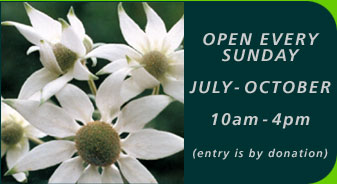
Katandra is a sanctuary for flora and fauna where the wildflowers are their most colourful during spring but all year round there are opportunities for bird watching. The sanctuary covers 12 hectares and is situated on the Ingleside/Warriewood escarpment. Choose to follow a short walk of about 1km or the longer 2km track through rainforest remnants with creeks and fern-fringed pools. Visit: www.katandra.orgBushcare in Pittwater
For further information or to confirm the meeting details for below groups, please contact Council's Bushcare Officer on 9970 1367Council's Cooee Newsletter - September - October 2016 HERE
BUSHCARE SCHEDULES
Where we work Which day What time
Avalon
Angophora Reserve 3rd Sunday 8:30 - 11:30am
Avalon Dunes 1st Sunday 8:30 - 11:30am
Avalon Golf Course 2nd Wednesday 3 - 5:30pm
Careel Creek 4th Saturday 8:30 - 11:30am
Toongari Reserve 3rd Saturday 9 - 12noon (8 - 11am in summer)
Bangalley Headland 2nd Sunday 9 to 12noon
Bayview
Winnererremy Bay 4th Sunday 9 to 12noon
Bilgola
North Bilgola Beach 3rd Monday 9 - 12noon
Algona Reserve 1st Saturday 9 - 12noon
Plateau Park 1st Friday 8:30 - 11:30am
Church Point
Browns Bay Reserve 1st Tuesday 9 - 12noon
McCarrs Creek Reserve Contact Bushcare Officer To be confirmed
Clareville
Old Wharf Reserve 3rd Saturday 8 - 11am
Elanora
Kundibah Reserve 4th Sunday 8:30 - 11:30am
Mona Vale
Mona Vale Beach Basin 1st Saturday 8 - 11am
Mona Vale Dunes 2nd Saturday+3rd Thursday 8:30 - 11:30am
Newport
Bungan Beach 4th Sunday 9 - 12noon
Crescent Reserve 3rd Sunday 9 - 12noon
North Newport Beach 4th Saturday 8:30 - 11:30am
Porter Reserve 2nd Saturday 8 - 11am
North Narrabeen
Irrawong Reserve 3rd Saturday 2 - 5pm
Palm Beach
North Palm Beach Dunes 3rd Saturday 9 - 12noon
Scotland Island
Catherine Park 2nd Sunday 10 - 12:30pm
Elizabeth Park 1st Saturday 9 - 12noon
Pathilda Reserve 3rd Saturday 9 - 12noon
Warriewood
Warriewood Wetlands 1st Sunday 8:30 - 11:30am
Whale Beach
Norma Park 1st Friday 9 - 12noon
Western Foreshores
Coopers Point, Elvina Bay 2nd Sunday 10 - 1pm
Rocky Point, Elvina Bay 1st Monday 9 - 12noon

Bushcare in Pittwater
Where we work Which day What time
Avalon
Angophora Reserve 3rd Sunday 8:30 - 11:30am
Avalon Dunes 1st Sunday 8:30 - 11:30am
Avalon Golf Course 2nd Wednesday 3 - 5:30pm
Careel Creek 4th Saturday 8:30 - 11:30am
Toongari Reserve 3rd Saturday 9 - 12noon (8 - 11am in summer)
Bangalley Headland 2nd Sunday 9 to 12noon
Bayview
Winnererremy Bay 4th Sunday 9 to 12noon
Bilgola
North Bilgola Beach 3rd Monday 9 - 12noon
Algona Reserve 1st Saturday 9 - 12noon
Plateau Park 1st Friday 8:30 - 11:30am
Church Point
Browns Bay Reserve 1st Tuesday 9 - 12noon
McCarrs Creek Reserve Contact Bushcare Officer To be confirmed
Clareville
Old Wharf Reserve 3rd Saturday 8 - 11am
Elanora
Kundibah Reserve 4th Sunday 8:30 - 11:30am
Mona Vale
Mona Vale Beach Basin 1st Saturday 8 - 11am
Mona Vale Dunes 2nd Saturday+3rd Thursday 8:30 - 11:30am
Newport
Bungan Beach 4th Sunday 9 - 12noon
Crescent Reserve 3rd Sunday 9 - 12noon
North Newport Beach 4th Saturday 8:30 - 11:30am
Porter Reserve 2nd Saturday 8 - 11am
North Narrabeen
Irrawong Reserve 3rd Saturday 2 - 5pm
Palm Beach
North Palm Beach Dunes 3rd Saturday 9 - 12noon
Scotland Island
Catherine Park 2nd Sunday 10 - 12:30pm
Elizabeth Park 1st Saturday 9 - 12noon
Pathilda Reserve 3rd Saturday 9 - 12noon
Warriewood
Warriewood Wetlands 1st Sunday 8:30 - 11:30am
Whale Beach
Norma Park 1st Friday 9 - 12noon
Western Foreshores
Coopers Point, Elvina Bay 2nd Sunday 10 - 1pm
Rocky Point, Elvina Bay 1st Monday 9 - 12noon
Long Reef Guided Walks
Below is the Fishcare Volunteers’ upcoming Walks and Talks which might be of interest to readers. We have been offering this free service now for about 15 years. Most days see somewhere round 30 people, young and old, and we even get people from places like Auburn and further afield. I add my bit as a former Australian Museum person and we also have a geologist to talk about the landward side of Long Reef. We’re dictated by tides, hence the irregular times, but always on a Sunday.Phil Colman
Free guided walks with Fishcare Volunteers Sunday 18 Sept 2016 2 pm – 4 pm Sunday 16 Oct 2016 2 pm – 4 pm Sunday 13 Nov 2016 1 pm – 3 pm Sunday 11 Dec 2016 12 noon – 2 pm Sunday 29 Jan 2017 3.30 pm – 5.30 pm Sunday 26 Feb 2017 2.30 pm – 4.30 pm Sunday 26 Mar 2017 1.30 pm – 3.30 pm Sunday 9 Apr 2017 12.30 pm – 2.30 pm • Subject to weather conditions • Bookings and enquiries by email: longreefwalks@gmail.com
Long Reef Fishcare Educational Walks Long Reef Aquatic Reserve, on Sydney’s northern beaches is a unique environment due to its geology and exposure to all four points of the compass. Protecting a huge variety of marine animals, birds and plants, it’s a great place to enjoy learning about our natural environment.
Department of Primary Industries NSW Fishcare Volunteers offer free, guided, educational walks onto the rock platform where in just two hours you’ll observe some of the vast variety of marine life.
You’ll also gain an understanding of the geographical features of the area, look at trace fossils and learn why some migratory birds travel tens of thousands of kilometres from Siberia and Japan to spend time at Long Reef.
An ideal family outing! More information: www.reefcarelongreef.org.au
Call For Heritage Council To Protect The Iconic Tarwyn Park Property
October 05, 2016: Lock the Gate AllianceThe NSW Heritage Council is meeting in Sydney today to make a decision on an urgent Interim Heritage Order application to protect Tarwyn Park in the Bylong Valley.
Lock the Gate Alliance recently submitted a nomination of the property for NSW’s State Heritage Register.
“The outstanding heritage values of this place clearly emerged from the nomination process,” said Lock the Gate spokesperson Nic Clyde.
“Tarywn Park is uniquely valuable in NSW as the birthplace of Natural Sequence Farming and for the property’s long and very colourful association with champion race horse breeding.”
In 2015, the ABC's Australian Story described Tarwyn Park as “the famous Hunter region property where horse breeder Peter Andrews created a land care revolution that has impressed everyone from retailer Gerry Harvey to garden guru Don Burke”.
Lock the Gate spokesperson Nic Clyde said, “We are calling on the Heritage Council today to recommend listing of this property on the State Heritage Register and to provide immediate protection by granting the internationally renowned property an Interim Heritage Protection order.
“Tarwyn Park is the cradle of Natural Sequence Farming, a unique land restoration system developed by Peter Andrews and his son Stuart. KEPCO's proposed Bylong Coal Project must not be allowed to ruin this laboratory of sustainable agriculture with an enormous open-cut and underground coal mine,” Mr Clyde said.
The Natural Sequence farming method - now in operation at Mulloon near Braidwood - was recently recognised by a United Nations initiative, established to tackle the challenges of making ambitious changes to our global agriculture and food systems.
In August 2013, the National Trust recognised the “scientific significance … of Peter Andrews’ development of his Natural Sequence Farming at Tarwyn Park based on the principle of reintroducing natural landscape patterns and processes as they would have existed in Australia prior to European settlement”.
Tarwyn Park has also long been associated with the Hunter’s thoroughbred horse breeding being the home of champion racehorses Heroic and Rain Lover._____________________
Come To The Harvest Festival On Liverpool Plains
Join the people of the Liverpool Plains and their supporters for a fun family-friendly weekend, bringing people together from far and wide to protect our food bowl and cultural heritage from Shenhua’s mega coal mine. Harvest Festival against Shenhua, Friday 6th Nov – Sunday 8th Nov, at Breeza on the Liverpool Plains. There will be live music, tours, kids activities, food, plus workshops on local farming, Gomeroi culture and heritage, the risks posed by the Shenhua mine, the skills to defend the Liverpool Plains against the mine… and more! IMPORTANT: REGISTRATION!To ensure you have the most up to date information about Harvest Festival, and to help organisers with numbers, it is important register to attend. Registering is quick and easy, simply click the "register here" link and fill out the form. WHEN AND WHEREHarvest Festival against Shenhua is taking place at “West Garawan” (next to the proposed Shenhua mine site) at Breeza on the Liverpool Plains. The program kicks off at 7pm Friday 6 November, and runs through to 4pm Sunday 8 November. Gates open 12pm Friday for camping set-up. WHAT TO BRINGToilets and adequate showers will be provided, otherwise come self-sufficient to camp on a hot open plain (eg. bring your tent, sleeping bag, torch, water bottle, and personal items). There are a range of alternative accommodation options in the nearby towns and villages of Quirindi, Gunnedah, Werris Creek or Spring Ridge. All of these options are roughly 20-30 minute drive from the event site. Food will be available on-site either to purchase or via suggested donation to cover costs. PROGRAMA full program detailing speakers, workshops, and other activities will be posted here once it is available.Each day there will be workshops, talks, tours, and fun for the kids throughout. It will be an inspiring and memorable weekend of good times, learning, and the chance to meet new people. On Friday and Saturday evenings there will be quality country music and the option to relax over dinner and a drink on your picnic rug. The workshop program will:- Offer education by locals and key experts in: local farming practices, water impacts and other threats of the mine, and local ecology – including koalas.
- Provide Gomeroi culture and heritage education by Gomeroi traditional owners.
- Sightseeing and photography tours of the beautiful and iconic Liverpool Plains.
- Focus on building capacity, preparedness and next steps to take action against Shenhua.
- Provide skills sharing in peaceful direct action.
DISTANCE TO HARVEST FESTIVAL:From Sydney: 4 ½ hours, via Pacific Motorway and New England HwyFrom Newcastle: 3 hours 15 minutes, via New England HwyFrom Tamworth: 50 minutes, via Werris Crk RdFrom Armidale: 2 hours, 10 minutes, via New England HwyFrom Lismore: 6 hours, via New England HwyFrom Brisbane: 7 1/2 hours, via New England HwyFrom Melbourne: 12 hours, via Newell HwyFrom Canberra: 7 hours, via Pacific Motorway and New England Hwy There is also a daily train service available from Sydney to Gunnedah.
- Offer education by locals and key experts in: local farming practices, water impacts and other threats of the mine, and local ecology – including koalas.
- Provide Gomeroi culture and heritage education by Gomeroi traditional owners.
- Sightseeing and photography tours of the beautiful and iconic Liverpool Plains.
- Focus on building capacity, preparedness and next steps to take action against Shenhua.
- Provide skills sharing in peaceful direct action.
NSW Government Seeks To Reclaim The Liverpool Plains
While on the Liverpool Plains and the Shenhua Mine, those following the campaign by farmers to save this food bowl would be aware that the NSW Government is currently negotiating with the Chinese company to reduce the size of the coal mine to the ridges of the Liverpool Plains, an area and mine which has been approved by Federal former Environment Minister Greg Hunt and which may now be the focus for further protest as it is feared allowing even this part of the adjacent area to be 'black holed' willcontaminate groundwater.
This follows on from the NSW Government's recent buyback, at $220 million, of the BHP Caroona coal licence - issued by the then Labor Government in 2006 for $100 million.
Interesting statements have been made (see pages 18-20) regarding the government's approach to coal mining in this state, and, what can now be expected by those applying for exploration licences, when the Shenua negotiations were recently raised:
"With the strategic release framework, the Government is saying that we need to think case by case right from the beginning about what are the social, economic and environmental factors before we even open it up for exploration. A lot of the old exploration rights were really mine planning exercises. That is why we saw, for example, people paying big money to get an exploration licence; they had reasonable expectations that they would be able to put in a mine, so the planning process was compromised." - Mr. Smith, from page 18:GENERAL PURPOSE STANDING COMMITTEE NO. 5Wednesday, 31 August 2016INDUSTRY, RESOURCES AND ENERGY
As each week brings more listings of 'have your say' on yet another coal project or an extension of one, and these proceeding after the required exhibition period despite objections (in the case of Shenhua 7 pages of these with only 4 listed as 'supports') will each have to prove it's 'black soil country' status, go through a decade of protests via the community, not always successful, for these places to be saved?
An example of what your fellow Australians are breathing in just a short distance from here this week, under brilliant sunshine in formerly pristine air and countryside:
Breathe This In - Taste It!
Filmed at Putty Road today: blast from Rio's Warkworth coal mine. The people of Bulga get to breathe this in.October 5 at 4:14pm
Have Your Say On Increased Coal Production At The Mandalong Southern Extension Project
06.10.2016: Departmental Media Release - Department of Planning and EnvironmentA proposal by Centennial Mandalong Pty Ltd for an increase in maximum coal production at the Mandalong Southern Extension Project will be on exhibition from today for community consultation.
The proposed modification seeks to increase the maximum annual production of unprocessed coal from six to six-and-a-half million tonnes.
The Department of Planning and Environment is keen to hear the community’s views on the proposed modification for the mine near Morisset, approximately 35 kilometres southwest of Newcastle.
A spokesperson for the Department of Planning and Environment said the local community always has an opportunity to share their views.
“Community consultation is an integral part of the planning process and the applicant will have to respond to the feedback we receive,” the spokesperson said.
“This feedback is taken into consideration as part of the assessment.
“It’s easy to participate by going online and we encourage everyone to take a look and have their say.”
To make a submission or view the Modification Application and accompanying documents, visit www.majorprojects.planning.nsw.gov.au.
Submissions can be made from Thursday 6 October until Monday 24 October 2016.
Written submissions can also be made to:
Department of Planning and EnvironmentAttn: Director – Resource AssessmentsGPO Box 39Sydney NSW 2001
The Modification Application and accompanying documents are also available to view in person at:Department of Planning and Environment: Information Centre, Level 22, 320 Pitt Street, SydneyCentral Coast Council: 2 Hely Street, WyongLake Macquarie City Council: 126-138 Main Road, Speers PointNature Conservation Council: 14/338 Pitt Street, Sydney.
Have Your Say On Modifications To The Bengalla Continuation Project
06.10.2016: Departmental Media Release - Department of Planning and EnvironmentA proposal by Bengalla Mining Company Pty Ltd for modifications to the Bengalla Continuation Project will be on exhibition from today for community consultation.
The proposed modifications seek to change the locations of explosive storage and reloading facilities, a water supply pipeline from the Hunter River and top soil stockpiles from fixed positions to more flexible locations within the mine’s approved disturbance boundary.
The Department of Planning and Environment is keen to hear the community’s views on the proposed modifications for the project located four kilometres west of Muswellbrook.
A spokesperson for the Department of Planning and Environment said the local community always has an opportunity to share their views.
“Community consultation is an integral part of the planning process and the applicant will have to respond to the feedback we receive,” the spokesperson said.
“This feedback is taken into consideration as part of the assessment.
“It’s easy to participate by going online and we encourage everyone to take a look and have their say.”
To make a submission or view the Modification Application and other accompanying documents, visit www.majorprojects.planning.nsw.gov.au.
Submissions can be made from Thursday 6 October until Monday 24 October 2016.
Written submissions can also be made to:
Department of Planning and EnvironmentAttn: Director – Resource AssessmentsGPO Box 39Sydney NSW 2001
The Modification Application and other accompanying documents are also available to view in person at:Department of Planning and Environment: Information Centre, Level 22, 320 Pitt Street, SydneyMuswellbrook Shire Council: Administration Centre, 157 Maitland Street, MuswellbrookNature Conservation Council: 14/338 Pitt Street, Sydney.
Have Your Say On The Springvale Mine Water Treatment Project
26.09.2016: Departmental Media Release - Department of Planning and EnvironmentA proposal by Springvale Coal Pty Limited for a water treatment project will be on exhibition from today for community consultation.
The Department of Planning and Environment is keen to hear the community’s views on the proposal, which seeks to:
• construct a pipeline to transfer mine water to Mount Piper Power Station• treat this water at a new desalination plant at the power station• use treated water in the power station’s cooling water system• discharge any excess treated water through the Springvale Coal Services site• place remaining by-products from the treatment process at the Springvale Coal Services site. The Planning Assessment Commission granted Springvale coal mine a 13-year extension of its operations last September. As part of its approval, the Commission required the mine to reduce the salinity of its discharges into the water catchment over the long term.
This proposal would allow the mine to achieve these water quality improvements while also supplying the power station with most of the water it needs to operate.
A spokesperson for the Department of Planning and Environment said the local community always has an opportunity to share their views.
“Community consultation is an integral part of the planning process and the applicant will have to respond to the feedback we receive,” the spokesperson said.
“This feedback is taken into consideration as part of the assessment.
“It’s easy to participate by going online and we encourage everyone to take a look and have their say.”
To make a submission or view the Environmental Impact Statement (EIS), visit www.majorprojects.planning.nsw.gov.au.
Submissions can be made from Tuesday 27 September until Tuesday 8 November 2016.
Written submissions can also be made to:
Department of Planning and EnvironmentAttn: Director – Resource AssessmentsGPO Box 39Sydney NSW 2001
The application and EIS are also available to view in person at:• Department of Planning and Environment: Information Centre, Level 22, 320 Pitt Street, Sydney• Lithgow City Council: 180 Mort Street, Lithgow• Nature Conservation Council: Level 14, 338 Pitt Street, Sydney.________________________
Have Your Say Invincible Coal Mine - Southern Extension Modification
Exhibition Start 27/09/2016Exhibition End 08/11/2016
Documents at: majorprojects.planning.nsw.gov.au/job_id=7961
"Castlereagh Coal are seeking approval for the extension of mining to occur over a period of up to 8 years to provide for flexibility in the supply of nut coal through: • providing an option for Manildra to source all required nut coal directly from Invincible • continuing to source nut coal from a range of other existing sources supplemented by supply from Invincible where necessary or cost effective to do so • utilising a blended product using coal from the other seams within the Southern Extension Area where this can be used at the Shoalhaven Starches Plant.
The mining of coal in the target Lithgow Seam will necessarily involve the extraction of coal from the Lidsdale and Irondale Seams which are located above the Lithgow Seam. In total, there is an estimated 2.7 Million tonnes (Mt) of run-of-mine (ROM) coal in all seams down to, and including, the Lithgow Seam.
Investigations are currently being undertaken to assess whether coal from the Lidsdale or Irondale Seams can be used at the Shoalhaven Starches Plant when washed and blended with coal from the Lithgow Seam. Surplus coal from the Lidsdale and Irondale Seams which is unable to be used in the Shoalhaven Starches Plant will be sold to Mt Piper Power Station for energy production consistent with the previous mining operations at Invincible."
Message from the Director of National Parks: Release of Review reports and preparation of reserve management plans
Australia is a leader in marine management, with one of the largest marine protected areas in the world.
State Governments and the Commonwealth are committed to establishing a National Representative System of Marine Protected Areas. By doing this we are protecting amazing marine biodiversity and a full range of ecosystems and habitats that will provide us with multiple community and environmental benefits for years to come.
As the Director of National Parks I have commenced the statutory process to develop draft management plans for 44 of these important reserves managed by Parks Australia on behalf of the Commonwealth Government and her peoples.
Together with Parks Australia staff I will be developing draft management plans for the marine reserves in the North, North-west, South-west and Temperate-east networks and the Coral Sea reserve. These reserves are located in Commonwealth waters, typically beyond the 3 nautical mile coastal waters of the States and the Northern Territory. They are adjacent to waters managed by State and Territory governments and a number are adjacent to marine parks and reserves managed by State agencies.
I plan to use recommendations contained in the recently released independent Commonwealth Marine Reserves Review reports from the Expert Scientific Panel and Bioregional Advisory Panel and comments sent during this first phase of the statutory process to prepare the draft management plans. The reports are the product of extensive consultation and provide an important reference point as we move towards finalisation of Australia’s national network of Commonwealth marine reserves.
The public notice that outlines this process is here.
Management plans provide for the protection and conservation of the marine reserves by setting out the arrangements for management of activities within reserves for a period of 10 years. They state how natural features, heritage and other values are to be protected and conserved and set out the rules about what activities can be done in reserves and where. The plans also provide certainty to communities by recognising where actions may be needed to support local and regional economies and industries and provide opportunities for people to experience and enjoy these areas within a well managed and balanced system. Management plans also recognise the long term connection of Indigenous people to these seascapes and their cultural obligations to look after these special areas.
To make these places as successful as possible we need your input and feedback on the recommendations in the review in this first phase of consultation.
Once we have reviewed all of the comments in this first phase we will finalise the draft management plans. These draft plans will be put out for public comment too so we can double check them with you before we present them to the Minister for his consideration and approval.
I strongly encourage you to read the reports and provide me with your feedback on the independent review’s recommendations. The easiest way to make a submission is to emailmanagementplanning.marine@environment.gov.au. You can send feedback until 11 October 2016.
During the planning and consultation processes, activities can continue to be conducted in the same way they have since the reserve networks were declared, until the new management plans come into effect. The management plan for the South-east Commonwealth Marine Reserves Network is already in place and it won’t be part of this process.
I am very much looking forward to hearing from you about what you think should be included in the draft management plans. I am also looking forward to finalising the plans and working with you on the important job of managing Australia’s marine parks – an amazing and inspirational initiative that will make us proud for generations to come.
Sally BarnesDirector of National Parks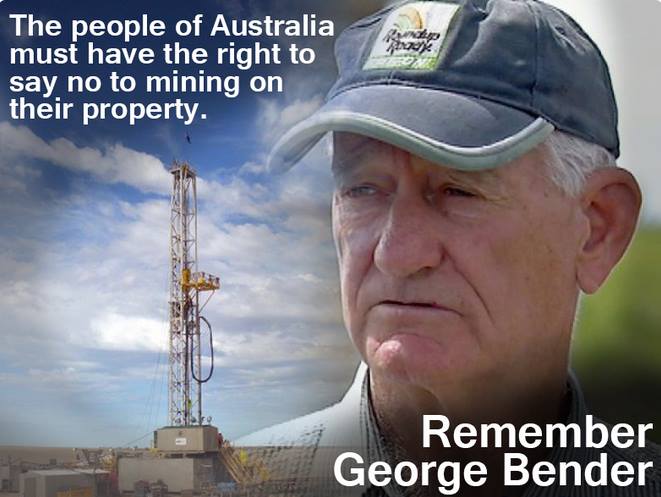

Upper Namoi Valley FMP
Public Exhibition of the draft Floodplain Management Plan for the Upper Namoi Valley Floodplain
What's this about?The proposed Upper Namoi Valley Floodplain Management Plan (FMP) will manage the development of flood works on the Upper Namoi Valley floodplain.
Once the plan commences, all new flood works and amendments to existing flood works will require approval in line with the Upper Namoi Valley FMP prior to their construction. The FMP provides management zones, rules and assessment criteria for determining flood work applications.
Have your sayPublic submissions are now invited on the Draft Upper Namoi Valley FMP.
The draft plan and additional information can be obtained from the DPI Water website - www.water.nsw.gov.au
The exhibition period is open until 28 October 2016 and written submissions must be received by this date.
ExhibitionDate: Sep. 19 - Oct. 28, 2016Time: 9:00am — 11:59pm
More Information
Email Rebecca Ballard: uppernamoi.fmp@dpi.nsw.gov.au 02 6774 9583
Community Housing Providers To Manage Social Housing
ACCC Invites Feedback On News Corporation’s Proposed Acquisition Of APN's Australian Regional Media Division
Immigration Scam Targets Migrants
ACCC Invites Industry Comment On ‘Complex, Fascinating And Vital’ Telecommunications Issues
International Prize For Quantum Computing Leader
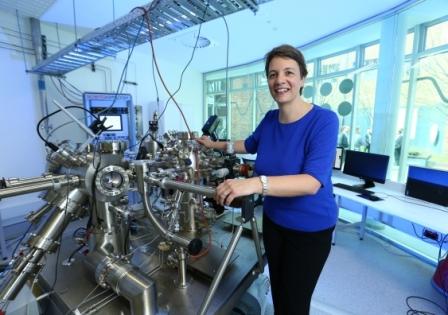
Strength Of Earth's Outer Shell Can Be Measured, Weak Spots Pinpointed
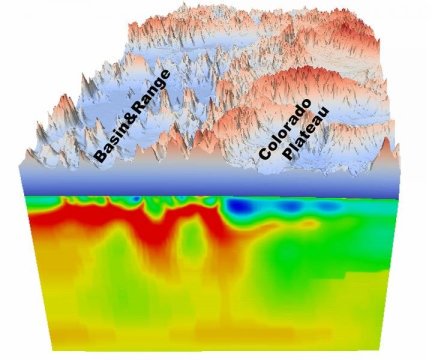
Have Your Say On A Mixed Use Development At Barangaroo South
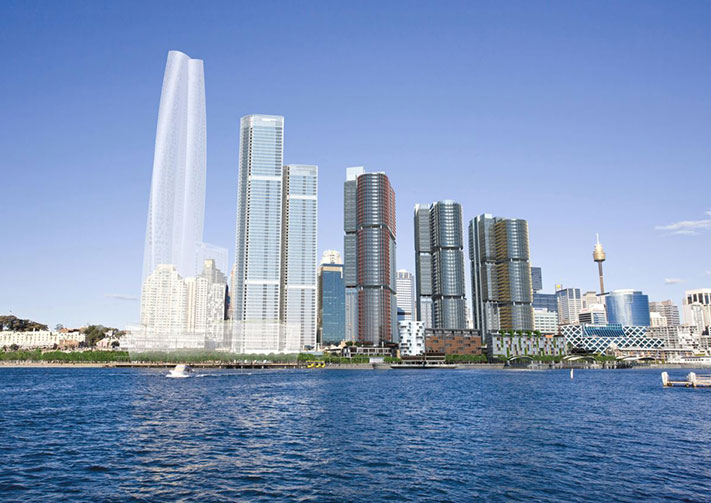
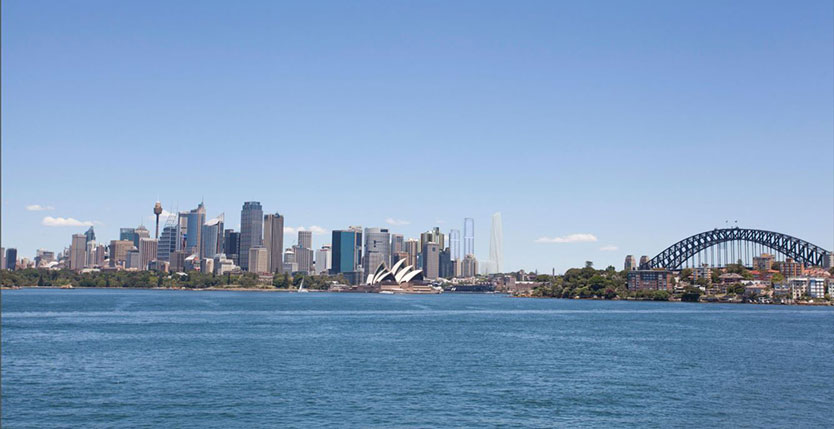
First Look At High-Tech Coroners Court
Australians Over 40 More Likely To Receive Treatment For Alcohol - But Young Adults At Most Risk
Monash Research Discovery Aids Fight To Reduce Post-Stroke Infection Deaths
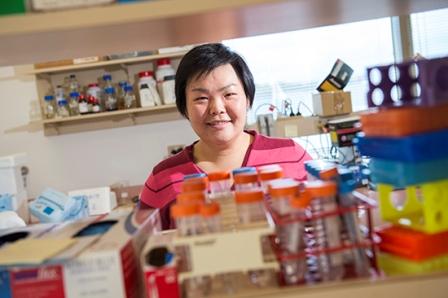
Early Marijuana Use Associated With Abnormal Brain Function, Lower IQ
Breast Density Matters In Detection Of Breast Cancer
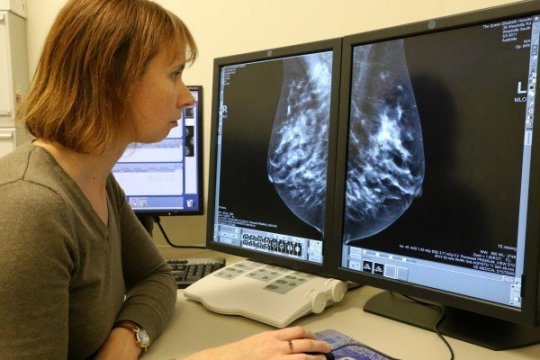
Saturn’s Moon Dione Harbors A Subsurface Ocean
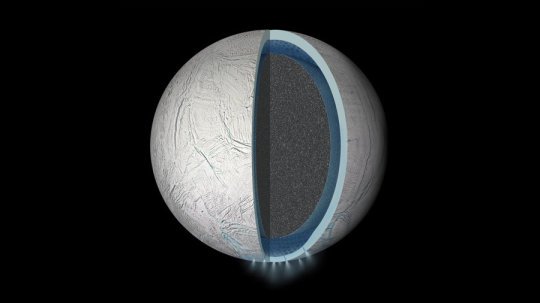
The Nobel Prize In Chemistry 2016
America And Australia Form New Partnership In Particle Physics Research
Health Determined By Social Relationships At Work
Honorary Doctorate Awarded To Former PM John Howard
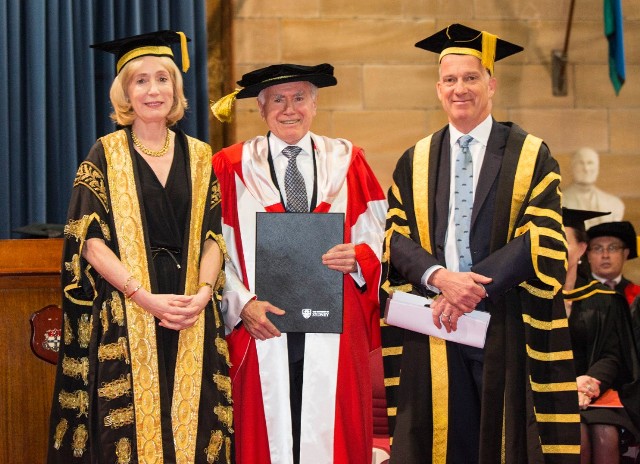
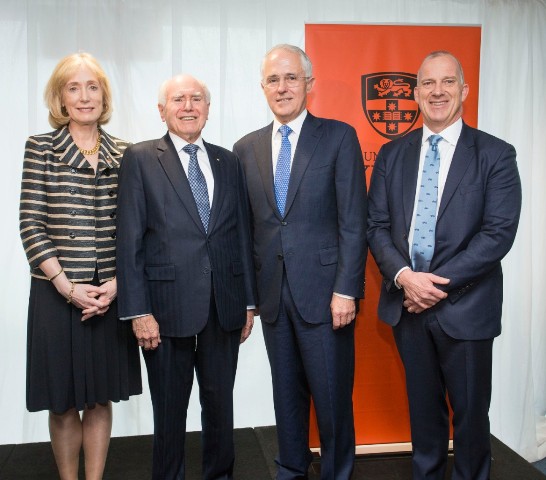
Sandcastle Or Beach Cricket Wicket?
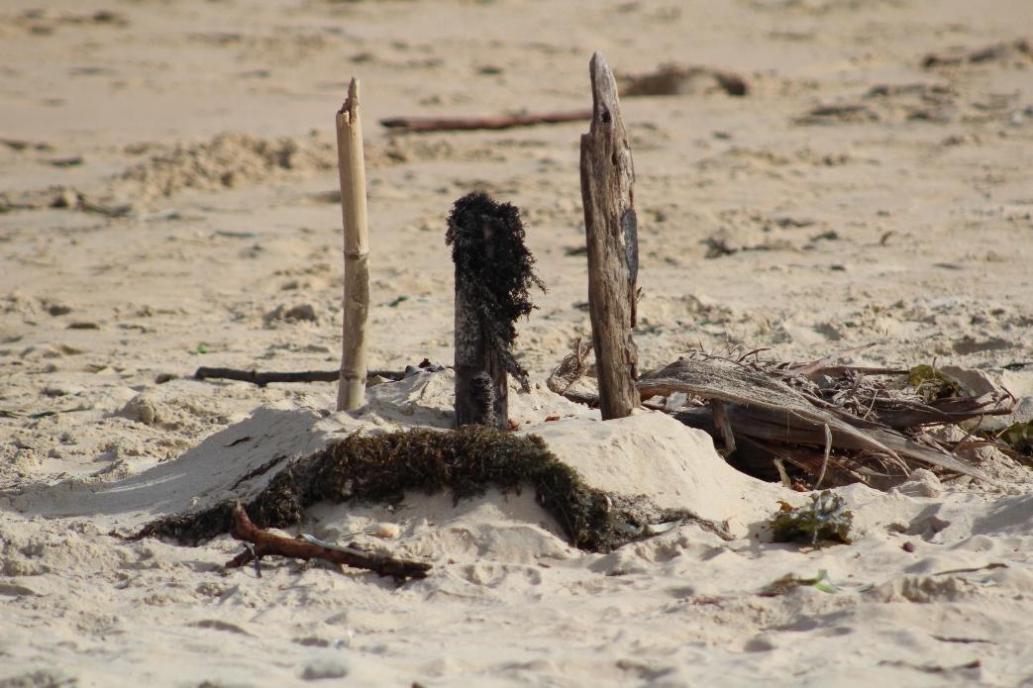
Disclaimer: These articles are not intended to provide medical advice, diagnosis or treatment. Views expressed here do not necessarily reflect those of Pittwater Online News or its staff.